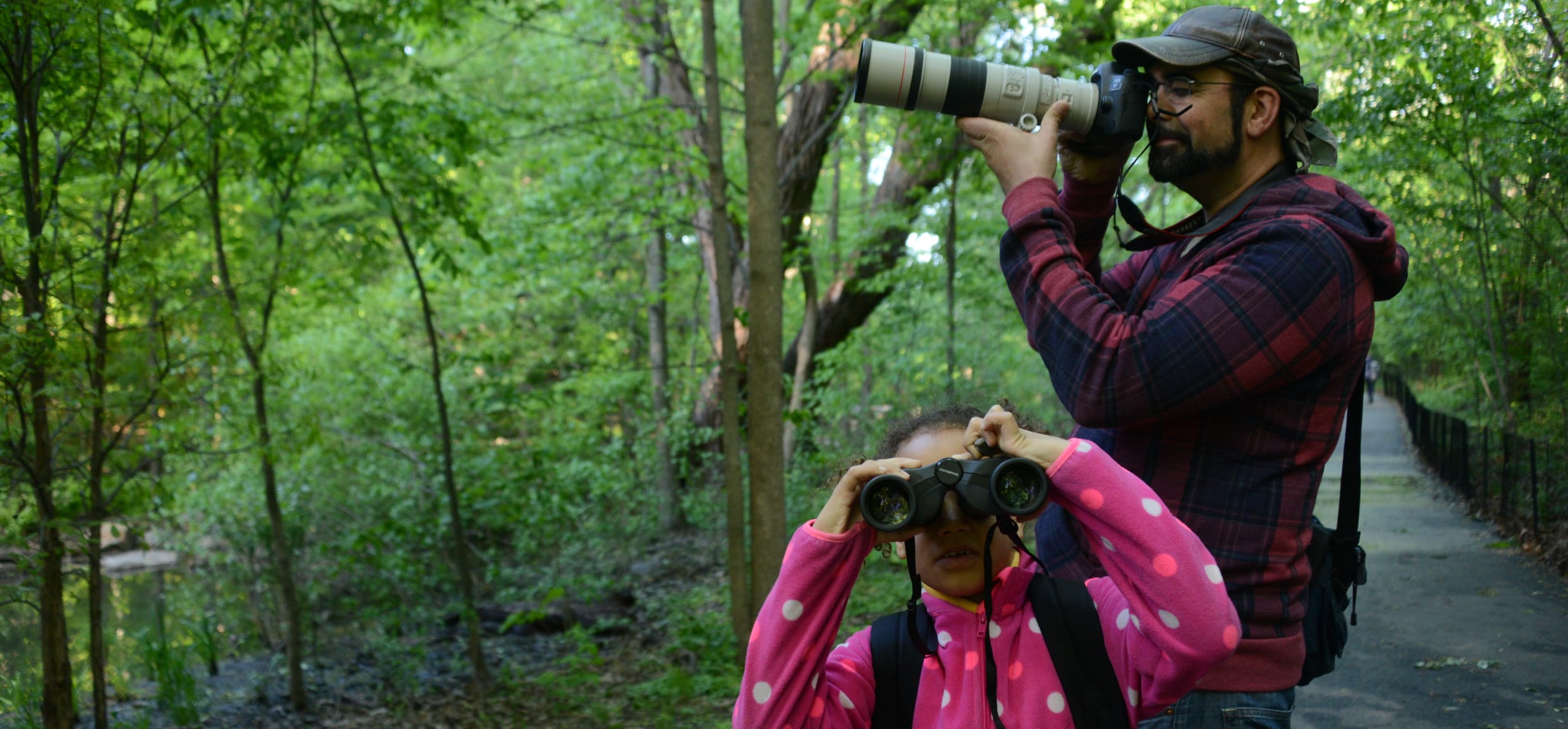Birding Guide

Interested in birdwatching? Learn how to respectfully spot the more than 210 bird species that make an appearance in Central Park.
Located along the Atlantic Flyway, Central Park welcomes more than 210 bird species each year. Many live in the Park year-round, with others making an important stop in the Park to rest and feed during spring and fall migrations. Whether you're an experienced birder or learning the basics of birdwatching, use this guide to discover how to respectfully spot and appreciate the many winged wonders of Central Park.

While Central Park is a permanent home to many birds such as the northern cardinal, other species like the gray catbird and barn swallow can be spotted during migration seasons.
The basics of seasonal migration
Billions of birds travel thousands of miles each spring and fall along different flyways—in other words, routes. Birds don’t necessarily migrate because of temperature changes. However, when it gets cold, a lot of their food sources may disappear. Insects die or hibernate, and trees stop producing leaves and berries, so migration is essentially a global search for food.
Central Park is a popular stopover for birds thanks to its diverse habitats. The Park’s trees and shrubs provide safe places to nest and offer food in the form of seeds and berries; birds can also take advantage of the Park’s vast insect life. The Park’s water bodies, many of them adjacent to the woodlands, welcome many species of aquatic birds.
Over the past decade, the Conservancy has worked to restore the woodlands that attract our aviary friends: the Hallett Nature Sanctuary, Ramble, and North Woods. We're dedicated to making the Park a hospitable home for wildlife and supporting biodiversity.

Scarlet tanager
Tips for birding in Central Park and beyond
Looking for birds is all about patience, luck, and movement. The best times of day to go birding are early mornings and late afternoons, when birds are the most active. To begin, let your eyes relax and scan trees, shrubs, and bushes for movement. When you first spot a bird, bring your binoculars up to your eyes without looking away from it. This will ensure you don’t lose sight of the bird. But keep in mind that binoculars help once you've already spotted the bird; they're not needed all the time.
Ready to identify a bird? Bring a guide or download an app to your phone. (We recommend this one from the National Audubon Society.) To start, make note of the bird's shape, bill, and markings. Birds can also be distinguished based on where they’re seen (on the ground versus the top of a tree) and what they’re doing (feeding, pecking, or flying).
Responsible birding
Please always remember that Central Park’s 843 acres are not only for humans to enjoy. When you visit, you’re entering the home of mammals, birds, fish, reptiles, and other animals who depend on this space for sustenance and shelter. Our actions and behavior in the Park have a direct impact on their survival.
When observing and photographing wildlife, your number-one priority should always be the wellbeing of the animal. Migration is a perilous journey for birds; please be sensitive to this. Don’t get too close or disturb a bird with callbacks and always stay on designated trails and paths.

Indigo bunting
A note on nesting
When spring migration is underway, it's also nesting season for many species. While we always love seeing new life in the Park, it's of the utmost importance to protect birds during this vulnerable time. Here are a few tips:
- Keep your distance from a nest and refrain from using callbacks. You may frighten the parents away from the nest, or your proximity could make them fearful to return—jeopardizing the babies’ chances of survival.
- Never remove nestlings or eggs from a nest.
- Don't "kidnap" fledglings! Fledglings are often mistakenly "rescued" if found outside of their nests. If they have lots of feathers and can hop, leave them where they are. This is an important phase of development, and their parents are nearby.
- Keep the surrounding plant life intact. Those very branches or leaves are likely providing essential camouflage from predators, or protection from wind, rain, and sun.
Interested in bird photography? Please explore the Audubon’s guide to ethical bird photography and videography.

American robin chicks

Support the Park
The Conservancy's work to restore and maintain Central Park's landscapes provides habitat for more than 210 species of birds each year. Help us keep Central Park a thriving and welcoming environment for these Park residents and visitors.